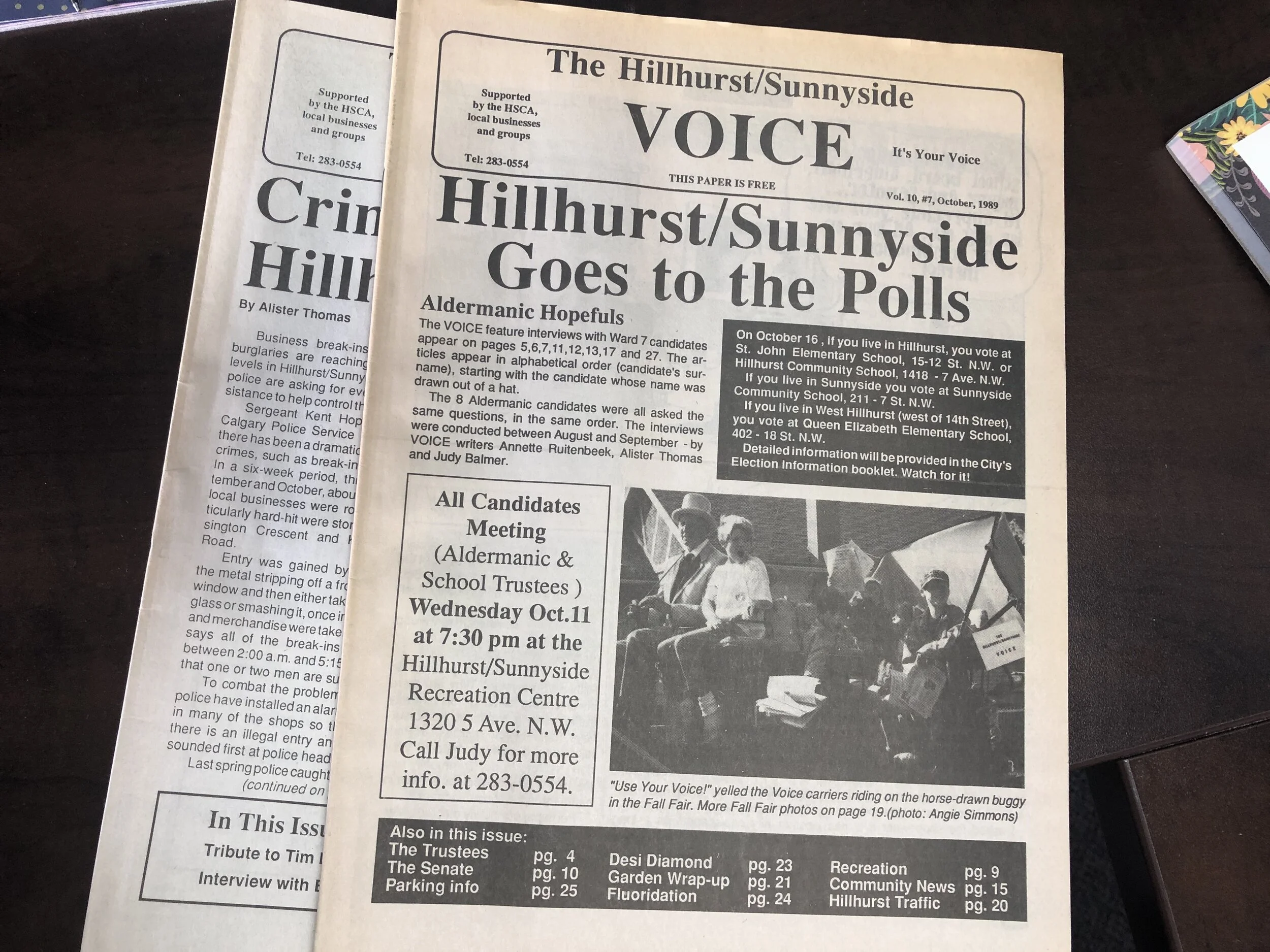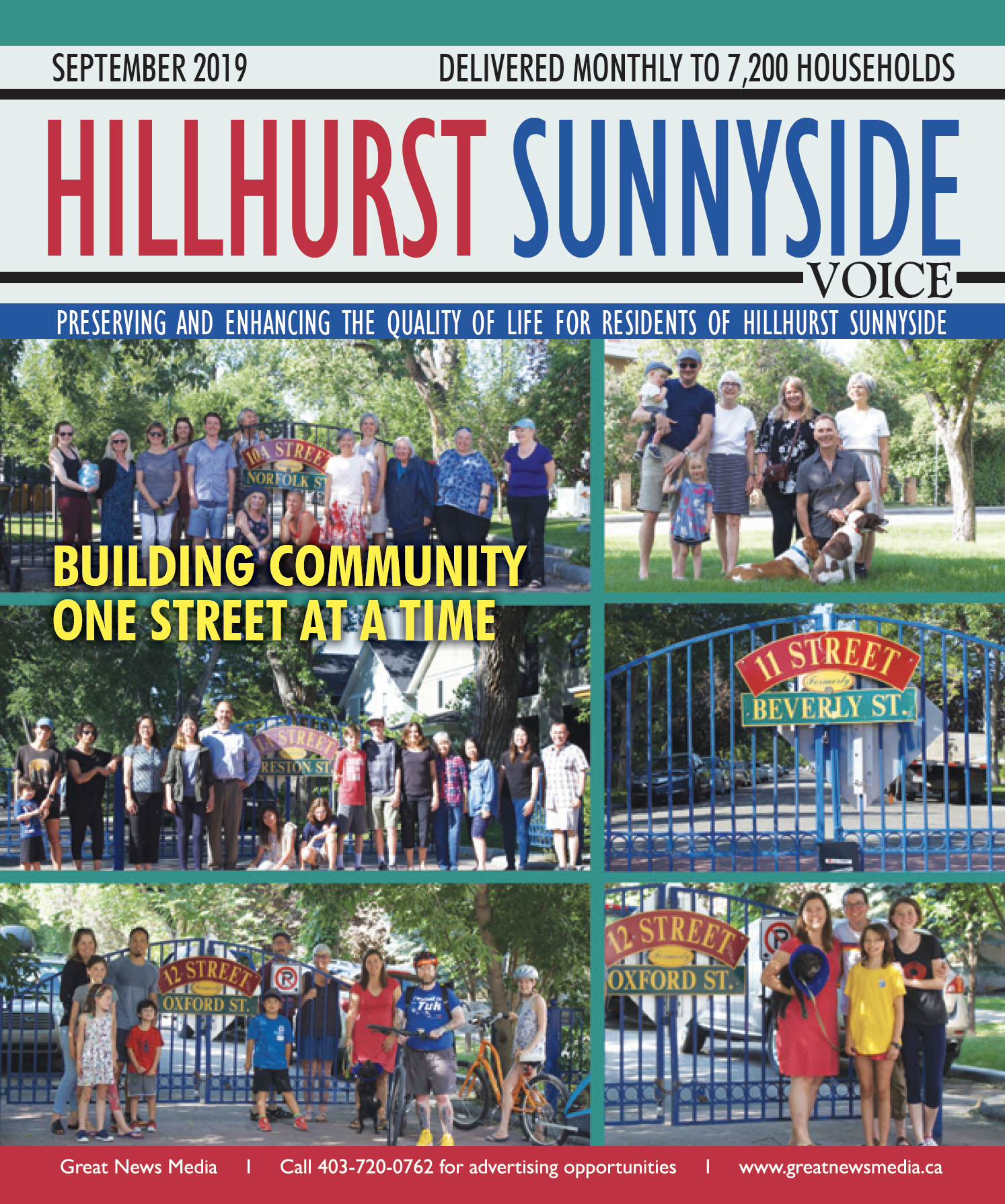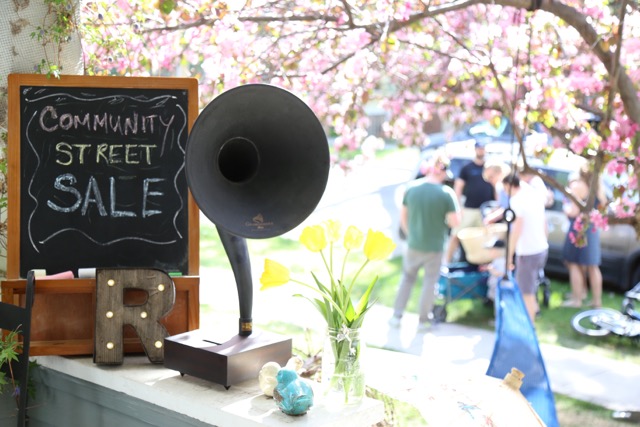Jane’s Walk 2019: A Weekend in Hillhurst Sunnyside
It’s the annual Jane’s Walk festival the weekend of May 3, 4, & 5! Jane’s Walks are free, locally-led walking tours inspired by legendary urban activist, Jane Jacobs. Walks are hosted by volunteers on the first weekend of May, whether it’s rain, snow or shine. Hillhurst Sunnyside has you covered with four walks on Saturday and Sunday – participation in any (or all four) walks is optional. Click on the links for details on each walk as follows:
Gentle Density in Historic Hillhurst
Saturday May 4 from 11:00 AM to 1:00 PM
Starts at HSCA, 1320 5 Avenue NW and ending at containR
Hosted by Decker, Lorna & Lisa and guest presenters (Hillhurst residents, Studio North, Sunnyside Sustainable Living)
Sunnyside Garage Art Tour
Saturday May 4 from 1:45 PM to 3:15 PM
Starts at containR, 1020 2 Avenue NW
Hosted by Christie and Darren
Spark Change – A Look at Laneway Housing
Sunday May 5 from 1-2:00 PM
Starts and ends at HSCA, 1350 5 Avenue NW
Hosted by Maricris & Lisa and guest presenters (Alloy Homes, City of Calgary).
Flood Protection in Sunnyside
Sunday May 5 from 4-6:00 PM
Starts and ends at the Sunnyside Bus Loop at 748 5 Street NW. Bonus: the City will arrange to open the doors to take a peek in the recently completed Sanitary Lift Station.
Hosted by Charlie, Lisa and Vania (City of Calgary Water Resources)
A fair amount of planning goes into the Jane’s Walk events. We sat down with Lisa Chong, Community Planning & Engagement Coordinator at the Hillhurst Sunnyside Community Association to learn more about organizing Jane’s Walk in Hillhurst Sunnyside.
Who is Jane?
Jane Jacobs (1916-2006) was an urbanist and activist whose writings championed a fresh, community-based approach to city building. She saw cities as ecosystems that had their own logic and dynamism which would change over time according to how they were used. With a keen eye for detail, she wrote eloquently about sidewalks, parks, retail design and self-organization. At the core of her work and thinking was the need to get out and walk your city and observe how people, through their actions and interactions, create communities with a strong sense of belonging (from the Calgary Foundation’s Jane’s Walk website).
What is Hillhurst Sunnyside’s relationship to Jane?
I was first introduced to the writings of Jane Jacobs in my Urban Studies 201 class in university. Jane’s ability to mobilize communities and champion for vibrant and diverse neighbourhoods piqued my interest in how planning, policy and design influences the social fabric of place and eventually led me to the Hillhurst Sunnyside Community Association.
The community activism that has shaped Hillhurst Sunnyside mirrors Jane’s work in many ways:
A strong sense of social justice and inclusivity resulted in HSCA’s historical and current advocacy for family-oriented and affordable housing, food security, social services and harm-reduction programs and support for seniors.
Resilience, demonstrating strength of community, organization and advocacy that resulted from the 2013 floods.
The HSCA Planning Committee has existed in various forms since the 1970s and continues to work to inform and educate residents in planning and development initiatives and ensure that neighbours have an opportunity to engage in civic matters together with the City of Calgary and development applicants.
Hillhurst Sunnyside was host to Jane herself: Ms Jacobs visited our community and saw Hillhurst Sunnyside as embodying the planning principles articulated in her 1961 book, “The Death and Life of Great American Cities” through successful qualities of scale and mixes of people with place. We also have a unique family connection to Jane as you will learn on the Saturday tour and at the following link – In the Family Footsteps: An Interview with Jane Jacob’s Calgary Nephew.
What was your process with organizing the Hillhurst Sunnyside walks?
Planning for this walk started a year in advance, when residents were asked what they would like to learn about in the 2019 walk. Walking tours can be tough to run as individuals, so we asked people to help! I’m connected with people daily due to my role at HSCA, the close-knit nature of the community and through redevelopment initiatives.
We have also cultivated positive relationships with City of Calgary staff who are excited to present about their work and to educate about the City’s process and talk about how citizens can engage in city- and community-building.
Development applicants also reach out to us as the Community Association (and vice versa) to present their design ideas to the wider community. We like to involve industry folks in the community through dialogue as new buildings will stand long after their design applications are accepted by the City and eventually built.
Our guest presenters are usually more than happy to talk about their work and about what they love about “home”.
What were some of the successes and learnings from the 2018 Walk?
Participants of the 2018 housing walk were thrilled to learn more about the city that they live in and asked excellent questions of our guest presenters. We delivered our Land Acknowledgement, welcomed participants and introduced HSCA before starting our journey. We connected Calgarians with 12 presenters and stories from neighbours, local non-profit housing organizations and the City of Calgary as we covered 2454 steps (1.87 km) and hosted 40 engaged minds and pairs of feet.
Some residents told us that while they are not able to participate in events at the HSCA building, they loved the idea of joining us on a collaborative walk and learning together. We were featured on Global News and on social media, generating interest and support in affordable housing and population diversity: https://globalnews.ca/news/4189734/more-calgary-affordable-housing-units-urged.
We found that participants wanted a chance to decompress, quench their thirst, and discuss what they learned. We also learned to reduce the distance of the walk, as it was a challenge to move so many people on a tight schedule and split up our walks. This year, we were awarded a modest Stepping Stones grant from the Calgary Foundation/First Calgary to provide refreshments during the first Saturday walking tour (lemonade, anyone?).
Additionally, we partnered with Sunnyside residents and walk leaders (Christie and Darren) to host two back-to-back walks on Saturday May 4 with a picnic lunch break and conversations in between. Bring your own food and drink and a blanket to sit on as we continue the conversation at containR.
Who else will be a part of the festival weekend?
To find more Jane's Walks in Calgary, go to https://www.janeswalk.calgaryfoundation.org. Remember to check back often as the website is still populating with all the various volunteer-led walks across the city.
Do you have any advice for any residents who may want to start a Jane’s Walk in their neighbourhood?
Ask for help!
You can get together with a neighbour or a friend on a topic you feel passionate about and start from there. This walk-buddy will help keep you motivated and will serve as a sounding board for any ideas. There are resources available at the Calgary Public Library and on the City of Calgary website, if you are looking for facts and historical information.
The Calgary Foundation organizes, promotes and provides training for aspiring Jane’s Walk Leaders in Calgary – contact Julie Black and Janet Hails for more information or go to their website at https://janeswalk.calgaryfoundation.org. You can also connect with HSCA and we can help you promote your walk on our media channels.
Where else can people go to learn more about Jane?
The Calgary Urban Affairs Book Club is hosting an event, “Jane’s Talk” to discuss the book, The Death and Life of Great American Cities.
Wednesday May 15, 2019
Former Central Library
616 Macleod Trail SE
6:30-8:00 PM
Register and find out more at https://showpass.com/janes-talk.

























